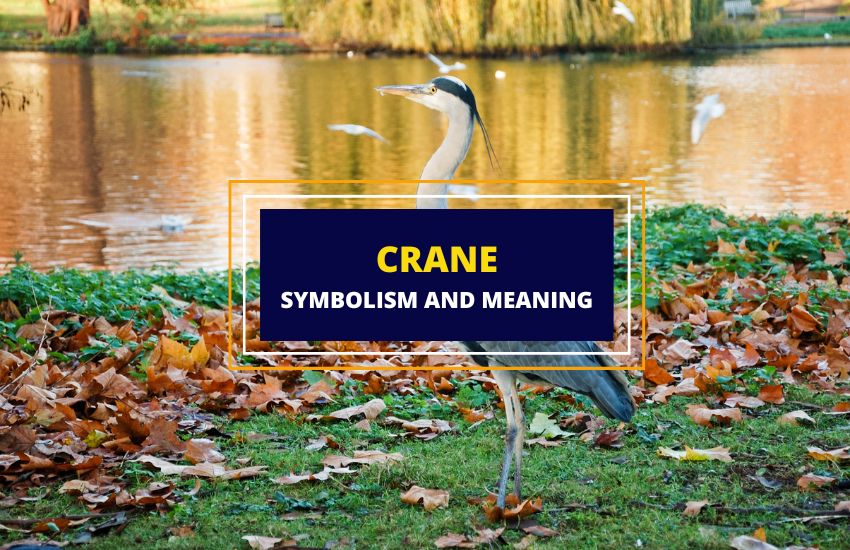
Table of Contents
Crane symbolism is a fascinating topic that has intrigued humans for centuries. The crane, a tall and elegant bird, is revered in many cultures worldwide for its beauty, grace, and charisma.
From ancient China to medieval Europe, the crane has been a popular feature in art, literature, and mythology as a powerful symbol of longevity, wisdom, and spirituality.
The crane’s symbolic significance isn’t limited to ancient cultures and has a place in modern-day society.
Join us as we delve into the mystical world of crane symbolism and discover the many layers of meaning behind this beautiful bird.
Crane in Egyptian Culture
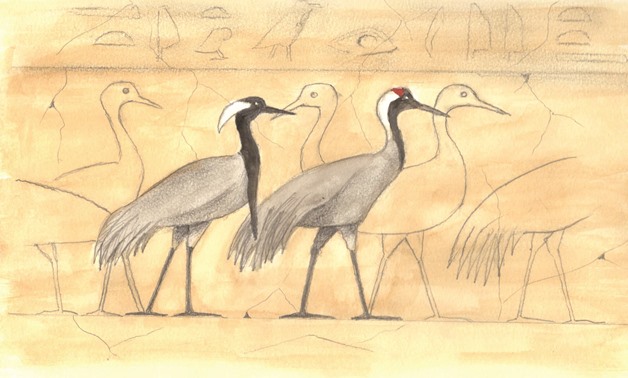
In ancient Egyptian culture, the crane symbolized power and royalty. Artists often depicted cranes in art and hieroglyphics as a representation of the pharaoh’s status and authority.
The cranes were also associated with Thoth, the god of wisdom, writing, and knowledge. The crane was the messenger of Thoth, symbolizing the god’s power and connection to the heavens.
The crane’s image was popular in royal tombs and temples, representing the pharaoh’s status and authority. Artists would depict its image with the image of the pharaoh, emphasizing the bird’s association with royalty and power.
The crane’s image inspires and captivates people, reminding us of the enduring power of ancient cultures and their symbols. The crane’s association with power serves as a reminder of the importance of authority and leadership in shaping society.
Crane in Greek Culture
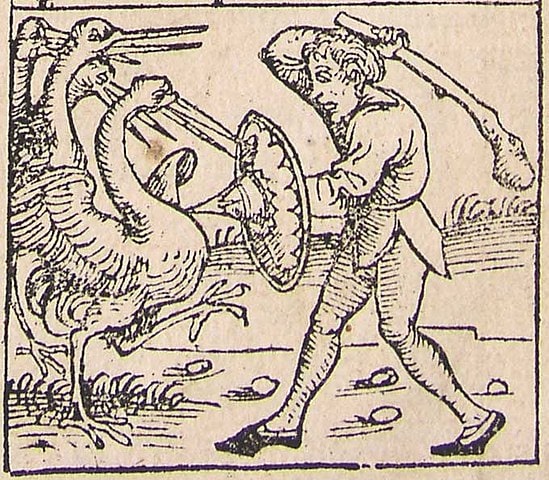
In Greek mythology, the crane symbolizes rebirth, representing the idea of renewal and regeneration. The bird’s image became popular with the myth of the cranes of Ibycus, where the flock avenges the death of the poet Ibycus by revealing the identity of his murderers.
The crane’s symbolism appears in the story of Tereus, where the king of Thrace is transformed into a bird, believed to be a crane, as punishment for his crimes.
The bird’s image symbolizes the cycle of life and death, representing the idea of transformation and renewal.
The crane’s association with rebirth is also visible in Greek funerary art, where the bird’s image represents the soul’s journey to the afterlife. Cranes are depicted alongside other symbols of death and rebirth, such as the phoenix and the serpent.
Cranes in Celtic Mythology
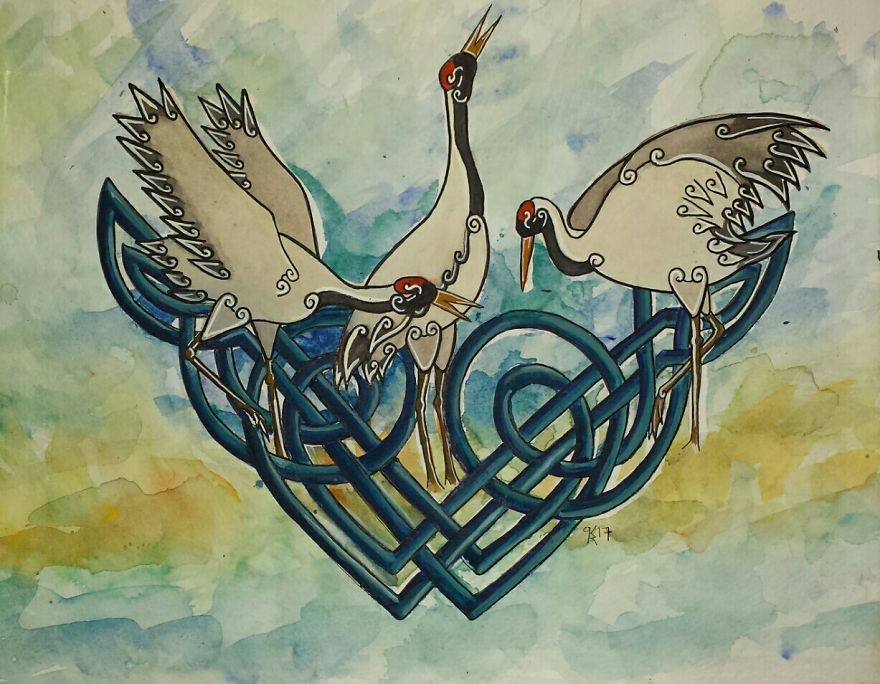
In Celtic mythology, cranes play a significant role in various tales and legends. Celts believed cranes were messengers or symbols of wisdom.
One famous tale involving cranes is the story of the Children of Lir. In this story, the four children of Lir get turned into swans by their stepmother and forced to spend centuries living as birds while she is ultimately turned into a crane.
In other tales, the hero Cúchulainn is followed by cranes and other animals. In addition to these stories, cranes are associated with several Celtic gods and goddesses.
For example, the crane is often seen as a symbol of the god Lugh, known for his wisdom and knowledge.
Similarly, the goddess Brigid is sometimes depicted in art holding a crane, representing her role as a goddess of beauty and harmony.
Crane in Chinese Mythology
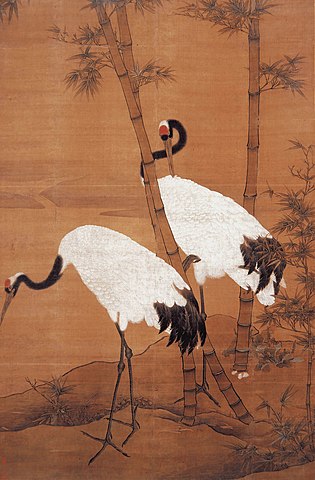
In Chinese mythology, the crane symbolizes longevity, wisdom, and transcendence. The bird is often associated with Taoist immortals, who are said to have the power to transform into cranes.
According to legend, the crane is a messenger of the gods and a guardian of the afterlife. It’s also believed to possess healing powers and is often depicted in traditional Chinese medicine as a cure for various ailments.
The crane is a popular subject in Chinese art, and its image represents good fortune and prosperity. The bird’s graceful form and elegant movements have inspired countless poets, painters, and calligraphers.
Artists often depicted the crane with the sun, representing the balance between light and dark and the interconnectedness of all things.
Cranes in Japanese Culture
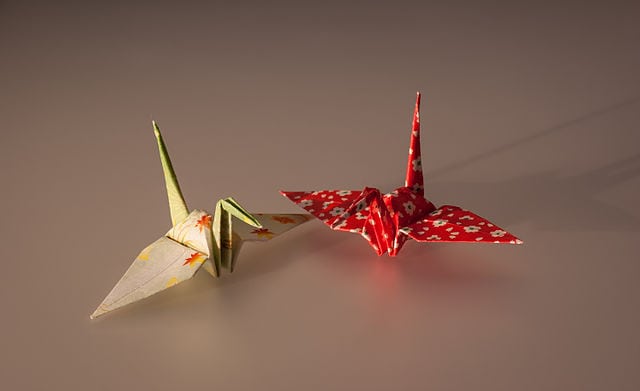
In Japanese culture, the crane symbolizes good luck, longevity, and happiness. The bird’s beauty and grace have inspired many traditional art forms, including origami, which involves folding paper into the shape of a crane.
According to Japanese legend, those that can fold a thousand origami cranes will get their wish granted. Folding cranes has become a popular tradition, particularly among those wishing for good health and prosperity.
The crane is also associated with the Japanese gods and goddesses, particularly the deity of luck and fortune, Ebisu. The bird’s image is often depicted in Japanese art and literature, representing good fortune and happiness.
In addition to its association with good luck, the crane symbolizes longevity and perseverance. The Japanese people admire the bird’s ability to fly for great distances and survive harsh conditions and see it as a metaphor for overcoming adversity and achieving success.
Cranes in Native American Cultures

In Native American culture, the crane holds a special place as a symbol of peace, harmony, and balance.
The bird’s graceful movements and serene demeanour have inspired many legends and stories, highlighting its importance in indigenous cultures across North America.
Many North American cultures connect the crane with the idea of balance and the interconnectedness of all things. The crane is a mediator between the heavens and the earth, representing the unity of the spiritual and physical realms.
The crane is also linked to the concept of healing, both physical and emotional. Its image is often used in traditional Native American medicine to symbolize rejuvenation and restoration.
In addition to its spiritual significance, Native Americans used the crane for its practical value. Crane feathers are used in many Native American crafts, including ceremonial headdresses and dance regalia.
Cranes in Korean Culture
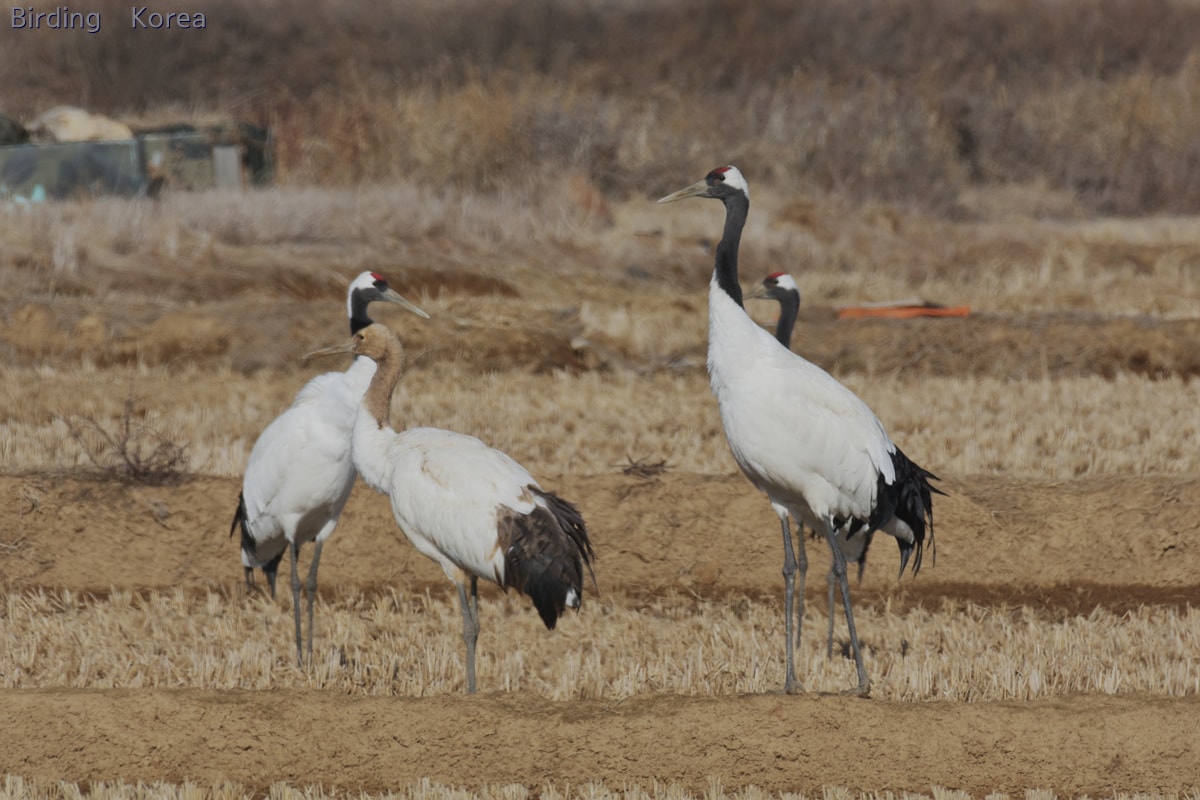
In Korean culture, the crane symbolizes good fortune and prosperity. Koreans believe that cranes bring luck and blessings to those who encounter them. Many admire the bird’s graceful and elegant movements, and Korean artists often feature the bird in their art and folklore.
The crane is particularly significant in Korean weddings, where a pair represents the bride and groom’s journey together.
The bird’s image is also a popular decor choice for traditional Korean clothing and household items, such as fans and vases, as a symbol of good luck and fortune.
Korean cuisine also includes crane meat, a delicacy Koreans associate with good fortune. Crane meat is almost always served at important events and celebrations.
The bird’s status as a symbol of good fortune has led to the conservation of the species in Korea, with efforts made to protect and preserve the bird’s natural habitats.
Crane’s symbolism in Korean culture represents the values of good fortune, prosperity, and longevity. Its image inspires and uplifts people, reminding them of the importance of embracing luck and blessings.
Cranes in Vietnamese Culture
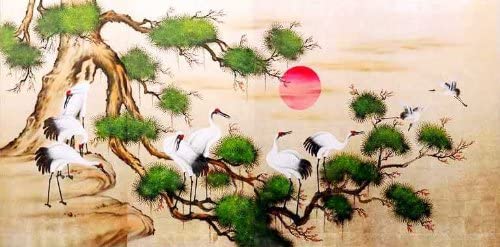
In Vietnamese culture, the crane symbolizes purity, loyalty, and longevity. You can often see the bird’s image in traditional Vietnamese art, where it represents the values of innocence and grace.
Vietnamese folklore is also important for understanding the symbolism of cranes. In folklore, the crane can transform into a human form and serve as a messenger for the gods.
Its image is also popular in Vietnamese literature and poetry, representing the purity of the human spirit and the quest for enlightenment.
The crane’s association with purity means that it’s a popular choice of décor for Vietnamese weddings, symbolizing the innocence of the bride and groom.
Today, the crane’s image inspires and uplifts people in Vietnam and worldwide, representing purity, grace, and loyalty.
Its beauty and elegance serve as a reminder of the importance of maintaining a pure heart and a clear mind, free from negativity and impurities.
What Does the Crane Symbolize?
1. Crane as a Symbol of Wisdom
The crane is a powerful symbol of wisdom, representing knowledge, insight, and foresight. Its image is popular in art, literature, and mythology as a metaphor for pursuing wisdom and enlightenment.
In Taoist art and literature, the crane symbolizes spiritual insight and transcendence. The Japanese used to respect the crane for its intelligence and perceived ability to communicate with the gods.
Similarly, in Native American cultures, the crane symbolizes wisdom, representing the importance of knowledge and understanding in navigating the complexities of life.
The bird’s image is often used in ceremonies and rituals to remind the need to seek wisdom and guidance from the natural world and the spirits. The crane’s graceful and deliberate movements reflect its wise and considered nature.
2. Crane as a Symbol of Longevity
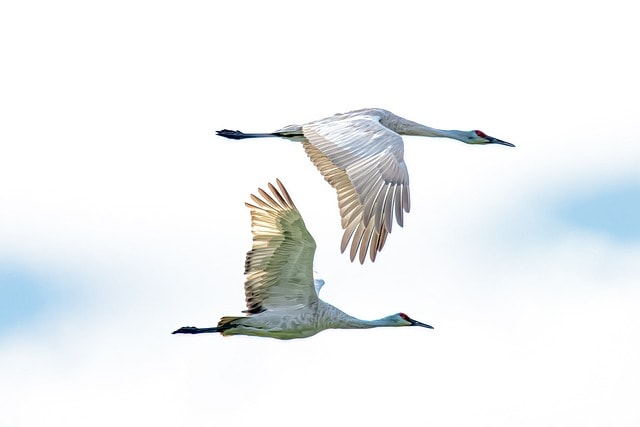
The crane is widely recognized as a symbol of longevity, a metaphor for a long and healthy life. Many cultures note its graceful presence, and it’s celebrated for its ability to live for many years.
In Chinese mythology, the crane is associated with immortality, and its image often appears in art and literature as a symbol of longevity and wisdom.
In Japan, the crane is believed to live for a thousand years, and folding a thousand origami cranes is considered a powerful wish for longevity and good health.
Similarly, in Native American culture, the crane symbolizes long life, representing hope for a full and prosperous existence.
The bird’s image is often used in ceremonies and rituals as a reminder of the importance of living in harmony with nature and maintaining a balanced and healthy lifestyle.
3. Cranes as Symbols of Spirituality
The crane is a powerful symbol of spirituality, representing the qualities of grace and transcendence. Cranes are important for spiritual contexts as a metaphor for the search for meaning and connection with the divine.
Similarly, the crane symbolizes spiritual connection, representing the importance of maintaining a close relationship with the natural world and the spirits.
The bird’s image is often used in ceremonies and rituals as a reminder of the need to remain connected to the spiritual realm.
Its ability to fly great distances and transcend the earthly realm is admired as a symbol of spiritual ascendance and enlightenment.
Its image serves as a reminder of the importance of seeking spiritual connection and the beauty and grace that can be found in pursuing a higher power.
4. Crowned Cranes as Symbols of Peace
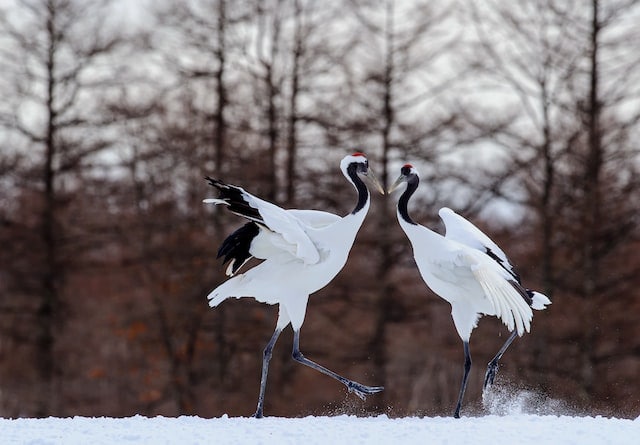
Crowned cranes are a common sight in West Africa and have been respected as symbols of peace in many of these cultures. These striking birds are powerful symbols of beauty and harmony.
In many West African cultures, crowned cranes are believed to bring messages of peace and tranquillity. Traditional art and folklore depict them as symbols of good fortune and happiness.
Their feathers are sometimes used in ceremonies and rituals to promote peace and harmony.
One of the most well-known examples of crowned cranes as symbols of peace are in the Yoruba culture of Nigeria.
In Yoruba mythology, the crane is associated with the god of peace and is believed to bring tranquillity and good fortune messages to those who see it.
The Yoruba people also use the crane image in their traditional dances and ceremonies to promote peace and unity.
Wrapping Up
The crane’s symbolism is rich and varied, representing different values and ideals in many cultures throughout history.
From its association with longevity and wisdom in Chinese culture to its symbolism of good luck and happiness in Japanese culture, the crane has inspired people worldwide with its grace, beauty, and resilience.
In Native American cultures, the crane symbolizes peace and balance, while in Korean culture, it represents good fortune and prosperity.
In Vietnamese culture, the crane symbolizes purity and loyalty, while in ancient Egyptian culture, it symbolizes power and royalty.
The crane inspires and uplifts people today through its various symbolic meanings, reminding us of the importance of maintaining a connection with the natural world and the spiritual realm.
Its image serves as a reminder of the power of hope, resilience, and transformation in facing life’s challenges.








